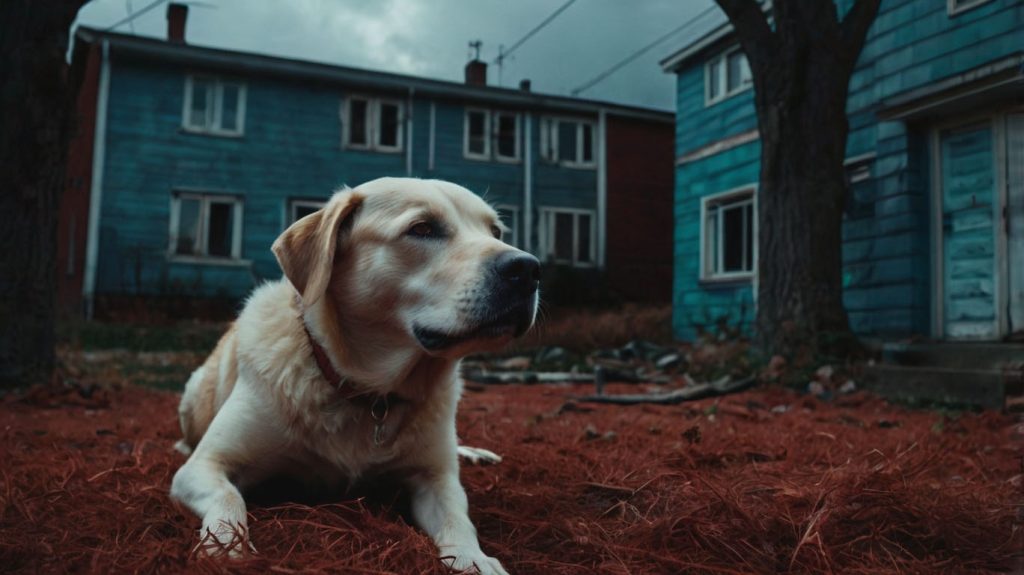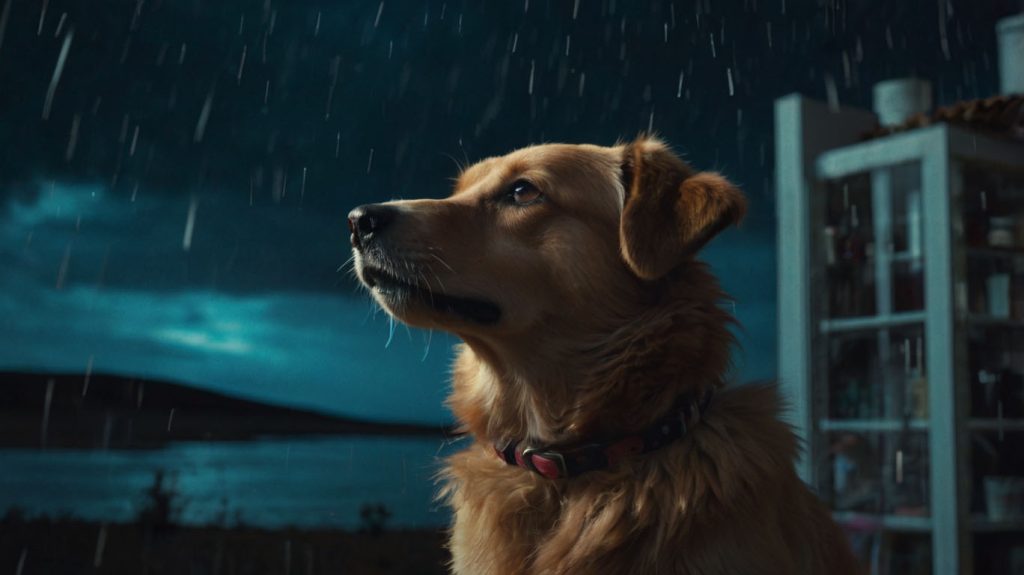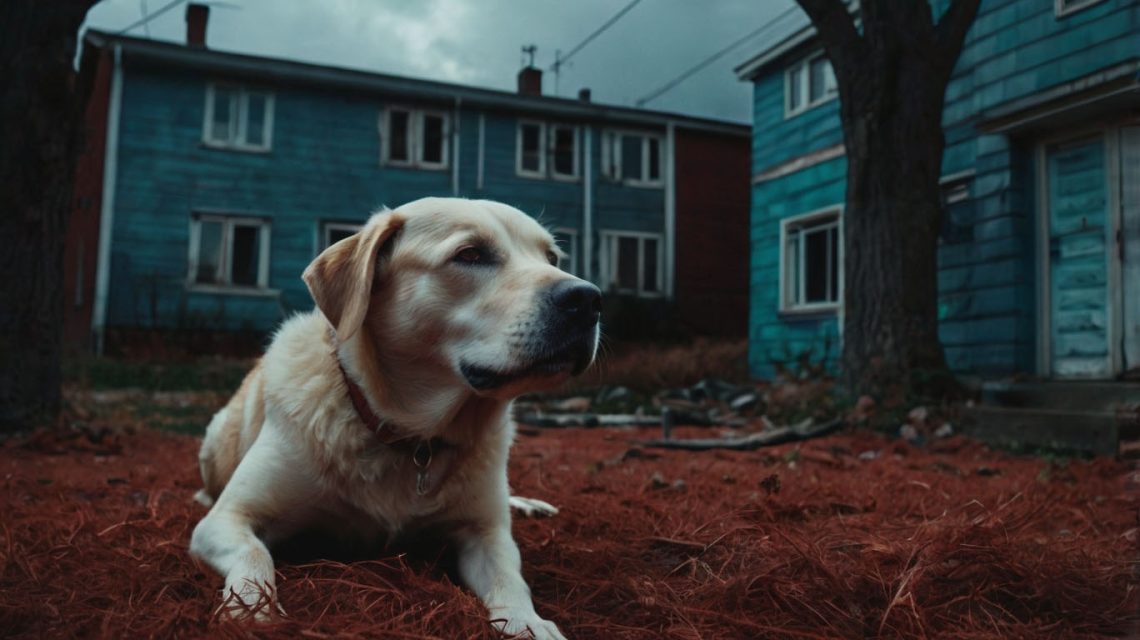Thunder rumbles. Lightning flashes. The sky darkens—and your dog starts panting, pacing, or hiding under the bed. This reaction, although common, signals something more than just discomfort. It’s a clear case of dog storm anxiety symptoms, and it affects more dogs than you might think.
Before diving into solutions, let’s look at a story that highlights just how intense this fear can be—and how the right intervention can transform your dog’s stormy nights.
Story: How Thunder Terrified Max Until Help Arrived
Max, a 3-year-old German Shepherd, was the definition of loyal and brave—until a thunderstorm hit. Each time one rolled in, he trembled, drooled excessively, and tried to squeeze into the tiniest spaces in the house.
His owners were puzzled and concerned. After speaking with their vet and researching dog storm anxiety symptoms, they learned that Max’s reactions were not unique. They implemented a combination of desensitization training, calming wraps, and a storm-safe room. Slowly, Max’s terror turned into tolerance.
Today, he still notices storms—but he no longer panics. His story proves that with knowledge and consistency, dog anxiety doesn’t have to control your home.

Why Recognizing Dog Storm Anxiety Symptoms Matters
Dog anxiety, especially triggered by storms, can escalate if left untreated. It doesn’t just affect your dog’s well-being—it also impacts your household’s peace and safety.
The Cost of Ignoring Dog Storm Anxiety Symptoms
- Leads to destructive behavior
- Increases risk of escape or injury
- Causes long-term emotional distress
- Can trigger aggression or shutdowns
- Reduces quality of life for both dog and owner
Addressing these symptoms early builds trust, calm, and confidence in your pup.
Dog Storm Anxiety Symptoms You Shouldn’t Ignore
Dogs can’t say “I’m scared,” but their behavior speaks volumes. Watch for these common dog storm anxiety symptoms during or even before a storm.
Shaking or Trembling
This is one of the most visible signs. If your dog starts trembling at the first sound of thunder or even atmospheric changes, anxiety is the likely cause.
Tip:
Watch for early cues—even before the first thunderclap. Dogs can sense pressure drops and approaching storms before humans do.
Hiding or Seeking Shelter
Dogs may run to closets, under beds, or into bathtubs to find safety. This instinct to “disappear” is a direct response to feeling overwhelmed or unsafe.
Tip:
Designate a storm-safe space with a cozy bed, dim lighting, and calming music to help reduce this urge to escape.
Excessive Panting and Drooling
Panting isn’t always heat-related. When paired with pacing or wide eyes, it’s often a signal of distress caused by storm anxiety.
Tip:
Use cooling mats or calming sprays to help regulate your dog’s physical response.
Destructive Behavior
If your dog scratches at doors, chews furniture, or digs at flooring during a storm, they’re likely trying to flee the perceived threat.
Tip:
Contain your dog safely during storms with crate training or a pet-proofed room.
Whining, Barking, or Howling
Vocalization increases when anxiety peaks. This behavior seeks comfort or alerts their human that something feels wrong.
Tip:
Speak softly. Use positive reinforcement to reward moments of quiet during storms.
Pacing or Inability to Settle
If your dog paces in circles, can’t lie down, or keeps changing spots, it’s a physical manifestation of emotional unrest.
Tip:
Offer a long-lasting chew toy or frozen treat to encourage them to settle.
What Causes Dog Storm Anxiety Symptoms?
Understanding the root of the fear makes treatment more effective. While each dog reacts differently, these are the most common triggers.
Main Causes Behind Storm Anxiety in Dogs
- Loud thunder or sudden noises
- Flashes of lightning
- Barometric pressure changes
- Static electricity or electromagnetic changes
- Negative past experiences during storms
Some dogs are more genetically predisposed to anxiety, while others develop fears due to traumatic events.

How to Help Dogs Showing Storm Anxiety Symptoms
Good news—dog storm anxiety is treatable. With the right tools and approach, you can significantly reduce your pup’s fear response.
Create a Calm Environment
- Close windows and curtains to reduce noise and light
- Turn on white noise machines or calming music
- Provide access to their favorite blanket or toy
Environment control is a fast, first line of defense during any storm.
Use Calming Tools and Gear
Many products help mitigate dog storm anxiety symptoms:
- Thundershirts apply gentle, comforting pressure
- Adaptil diffusers mimic calming pheromones
- CBD chews or vet-approved supplements support relaxation
- Ear wraps or noise-cancelling gear reduce sound exposure
These tools work best when paired with training and consistency.
Desensitization and Counterconditioning
This long-term solution involves gradually exposing your dog to storm sounds and rewarding calm behavior.
- Play thunderstorm recordings at low volume
- Pair with treats, play, or relaxation
- Slowly increase volume over time
Patience is key—never rush the process.
Consult a Professional for Severe Cases
Sometimes, even the best home remedies fall short. That’s when a certified behaviorist or vet can provide tailored support.
- They may recommend behavior modification plans
- Prescription medication may be considered for extreme anxiety
- Some offer anxiety classes or workshops
There’s no shame in seeking help—it’s a powerful act of care.
Case Study: Coco’s Journey from Chaos to Calm
Coco, a rescue Beagle, would bolt under the couch at the slightest storm sound. Her panic led to broken furniture, scratched floors, and frequent vet visits.
Her owner implemented a multi-step plan:
- Safe zone with soft bedding
- Classical music during storms
- Daily practice with storm recordings
- Use of a Thundershirt and natural calming spray
After 8 weeks, Coco didn’t just survive storms—she slept through them. Her progress shows that consistency and empathy make all the difference.
FAQs About Dog Storm Anxiety Symptoms
Can dogs sense storms before they begin?
Yes. Many dogs react to barometric pressure or static changes before humans notice.
Is storm anxiety the same as noise phobia?
Not exactly. Noise phobia includes fear of fireworks, vacuum cleaners, or construction sounds. Storm anxiety often involves multiple sensory triggers.
Should I comfort my dog during storms?
Yes—calm reassurance is helpful. You won’t reinforce fear by offering love.
Do all dogs experience storm anxiety?
No. While common, not every dog reacts. Genetics and early life experiences play a role.
Will my dog outgrow storm anxiety?
Unlikely without intervention. Training and tools are needed to reduce fear.
Conclusion: Don’t Wait to Address Dog Storm Anxiety Symptoms
Storm anxiety isn’t “just a phase.” If your dog trembles, hides, or panics during storms, it’s a real problem—and one that deserves your attention. By understanding dog storm anxiety symptoms and responding with calm, consistent strategies, you can transform fearful nights into peaceful ones.
Start small, stay steady, and celebrate progress. Your dog doesn’t need perfection—they need patience.


